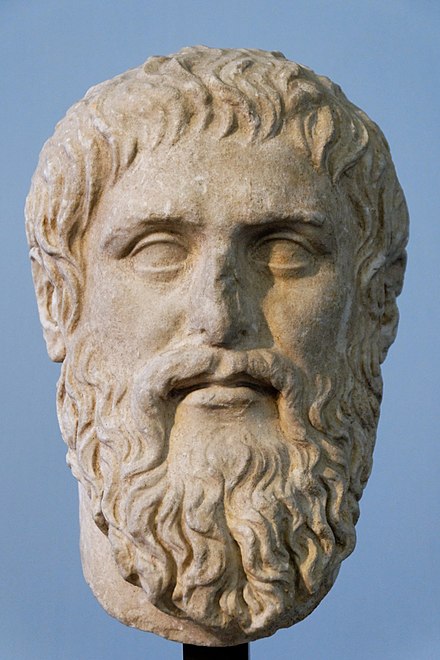Plato
 Plato was a Greek philosopher, born around 427 B.C., who lived in Athens for most of his life. He was a follower of Socrates and became his disciple in
Plato was a Greek philosopher, born around 427 B.C., who lived in Athens for most of his life. He was a follower of Socrates and became his disciple in
When Socrates was put to death in Athens, Plato left to travel and returned inspired by new ideas, some of which came from contact with the Pythagoreans. Upon his return he founded the first university, a school on the western edge of Athens called the Academy. Over the door was the inscription: "Let no one ignorant of mathematics enter here." Scholars at the Academy did not seek knowledge for practical use but rather for the enrichment of their souls. In ancient Greece, math was a philosophical pursuit, rather than an applied discipline. Plato considered mathematics a branch of knowledge connected with the highest planes of abstract thought.
In one of his dialogues, Timaeus, Plato defined the only five possible regular solids. A regular solid is an object made of equivalent faces where all lines and angles of these faces are equal. These solids were probably discovered by the Pythagoreans, but Plato is credited with actually defining them. To the Greek philosophers, the Platonic solids represented the four "elements," (earth, air, fire, water) and the universe. The tetrahedron has four triangular sides and represented fire. The hexahedron, or cube, has six square sides and represented earth. The octahedron, composed of eight triangles, represented air, and the icosahedron, composed of 20 triangles, represented water. The universe as a whole was represented by the 12-sided pentagonal dodecahedron.
Although mainly concerned with moral philosophy, and inclined to belittle any student who sought knowledge for practical gain, Plato did apply mathematics to the real world in one case: the heavens. Since he believed the heavens to be a realm of abstract perfection, it made sense for him to explain that perfection through mathematics. He considered heavenly bodies to be perfect geometric forms moving in perfect circles.
This idea of a universe composed of perfect forms moving in perfect patterns and rhythms was incompatible with the science of astronomy for hundreds of years. Astronomers had to make continual exceptions to these rules of perfection as their observations of the heavens revealed very different patterns than those embraced by the ancient philosophers. Still, Plato's philosophical ideas continue to challenge our minds as well as our concepts of the world around us.












